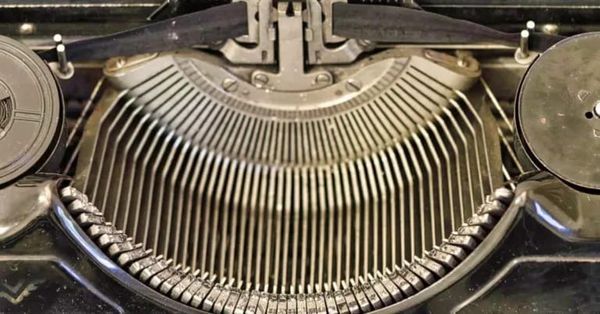
Let me take you on a nostalgic expedition to a bygone era, where the rhythmic dance of typewriter keys and the intoxicating scent of ink filled the air. Close your eyes for a moment and imagine yourself sitting on your mother’s lap, captivated by the magic of the typewriter. Ah, the memories!
The Melancholic Symbol of Typewriters
In today’s world of digital marvels and touchscreen thrills, the typewriter stands as a melancholic symbol of a time long gone. It takes us back to an era when expressing thoughts and stories meant striking keys that lovingly imprinted ink onto paper. The satisfying click of each key was like music to the ears, a melody that spoke volumes.
Typewriters’ Journey of Evolution
To truly appreciate the beauty of typewriters, we must travel back to the 18th century, when the seeds of mechanical writing contraptions were sown. It wasn’t until the 19th century that functional typewriters emerged, bringing with them a wave of innovation. One such marvel was the Sholes and Glidden typewriter, also known as the Remington No. 1, which debuted in 1873.
This ingenious invention marked a giant leap forward in the world of mechanical writing. It introduced the “QWERTY” keyboard layout, still in use today, which solved the problem of constantly jammed letter combinations on early typewriters. And thus, the typewriter we know and love was born.
The Ripple Effect on Communication and Society
The impact of typewriters on communication and society cannot be understated. Let’s take a moment to reflect on the domains that felt its influence:
Increased Celerity and Efficiency
Typewriters revolutionized the way we write and produce documents, surpassing the speed of handwritten transcripts. The skilled typists became maestros of creation, bringing a new level of efficiency to workplaces and enterprises everywhere.
Document Homogenization
Every keystroke on a typewriter brought forth a mark of consistency, resulting in meticulously precise documents. This feature was particularly important when it came to the creation of legal and official writings.
Championing Newspapers and Publications
The rhythmic dance of typewriter keys quickened the rhythm of the newspaper profession. It paved the way for rapid news compilation, establishing newspapers as the dominant source of information. As typewriter prices dropped, more people joined the realm of professional writing and correspondence, shaping the literary landscape
Protecting Our Legacies
Typewritten documents exhibited a tenacity that handwritten counterparts rarely matched. They played a vital role in preserving historical records and literary treasures, ensuring that our legacies endure. The typewriter became a guardian of history, silently whispering stories of the past to those who listen.
A Legacy Continued: Typewriters in Today’s Tapestry
While the digital wave pushed typewriters to the sidelines, their legacy still shines brightly in our modern world. Let’s discover a few ways in which typewriters continue to weave themselves into the fabric of our lives:
Desirable Antiquities
Vintage typewriters have transformed into sought-after antiquities, their age-old charm attracting collectors and enthusiasts. These machines hold not only exquisite design but also stories of the past and the history they represent. The clatter of typewriter keys and the tactile experience of typing evoke a strong sense of nostalgia. Some writers even find inspiration in the tactile practice of typing on a typewriter, sparking their creativity.
Artistry and Innovation
Artists and designers have seamlessly blended typewritten text into their works, bringing together the vintage spirit of typewriters and the creativity of modern times. This delicate dance between eras breathes new life into art, literature, and film, giving them a timeless quality.
Typewriters have adorned the pages of literature, the frames of films, and the canvas of art. They continue to find their place in peaceful writing retreats and immersive seminars, serving as tools for concentration and imagination. The rhythmic cadence of typewriter keys guides writers on a journey of exploration, connecting them to their literary heritage.
The typewriter is an emblem of artistry and ingenuity, an evocative tribute to an age that whispers its tale to those who listen. It may no longer hold the banner of technical progress, but its legacy continues to illuminate the paths of writers, artists, and enthusiasts alike. So let us embrace the typewriter’s clattering cadence and cherish the bridge it forms between our past and present.